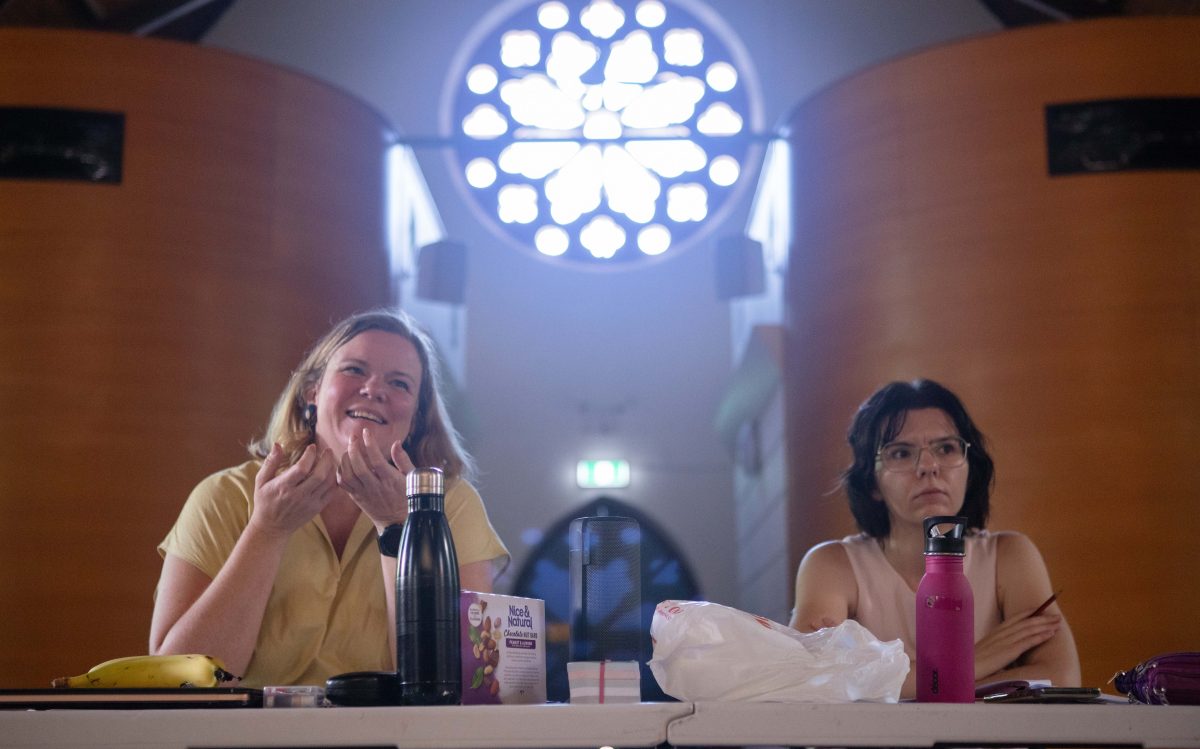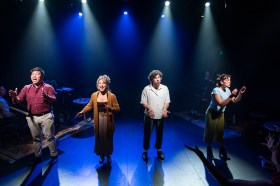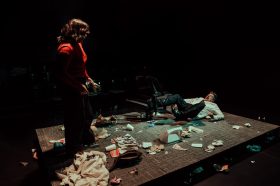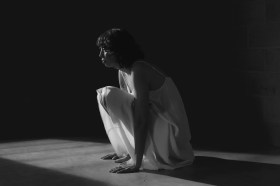Creative development is a fascinating, yet purposefully nebulous, concept coveted by many creative practitioners. It can incentivise practice, forge vital networks and generally help creative artists with a tangible path for their future endeavours.
But what exactly is creative development? How long is that proverbial piece of string? Creative development may, for example, allow participants the use of a space in which to explore, rehearse or perform. It may, for instance, facilitate mentorship, or provide technical or artistic advice. In terms of those ever-present logistical concerns, it may, in some cases, provide financial support. Well-rounded (and therefore sought after) creative development, of course, attempts to provide all three.
Creative Victoria, as a suitable exemplar of a funding body (for the purposes of this discussion), suggests that creative development fulfils roles including involvement in collaborations, contributing to the development of professional creative practice, and ultimately reflecting the diversity of the Victorian community. That’s a lot of KPIs to encounter, let alone implement, so how does creative development work in practice?
In an attempt at answering the question, ArtsHub recently followed the creative development journey of a disabled and non-binary artist, Rachel Edmonds. Their work was showcased as part of the City of Maribyrnong’s Bluestone Church Arts Space Residency Program.
According to Edmonds, creative development of this kind is vital in allowing practice to evolve and move forward into an effective and eventually self-sustaining sensibility. ‘We needed a space to work,’ they explain. ‘We needed creatives to work with. We needed funding basics like printing. All of these things cost money and, without that financial support, the project wouldn’t have been possible.’
The project is Portaloo, a new work set against a backdrop of outer suburban Melbourne in the early 90s. It is funny, thoughtful, intriguing and confronting, presenting a coming-of-age story with a plethora of provocative challenges including identity, sexuality, guilt, regret, friendship and belonging.
On Friday 19 January, after two weeks of script workshopping, character development and story analysis, Portaloo had its first public showcase at the Bluestone Theatre, Footscray. For those unfamiliar with a showcase (also known as a rehearsed reading), actors have scripts in hand, sets and props are minimal, and audience members gain an overall sense of the piece rather than being bogged down with design decisions or technical specifications. It’s an opportunity for all involved – actors, writer, director, dramaturg, costumiers, set designers and audience members – to be at the beginning of a new work. It’s a fascinating process, providing a very different kind of emotional and intellectual investment.
Directed by Jennifer Piper, who also served as dramaturg, the piece features four actors – Emily Farrell, Huw Jennings, Otim Arima and Cyd Angelico.
‘Theatre does not exist without an audience,’ says Piper. ‘This public showing is an irreplaceable part of creative development. It allows us to witness how the story and the characters – with whom we’ve become so familiar – affect the people for whom we make theatre in the first place.’
Edmonds believes that such support is vital in shaping the immediate and long-term future for practitioners. ‘Supporting early career playwrights, especially from marginalised backgrounds, is vitally important in making sure our artistic landscape is reflective of the full human experience,’ they add. ‘Art is so important to our lives, and opportunities provided by financial support mean we get more stories and perspectives to embrace, learn from and enjoy.’
Edmonds graduated from the National Theatre Drama School in 2016. Previous work includes Have you Tried Yoga?, which received a Fringe Award (2018) and was performed in Melbourne and Adelaide, as well as When You Wore Braces, performed at the Bluestone Church Arts Space in 2023. They were also a finalist in the Midsummer Queer Playwriting Award in 2019.
In terms of the creative development for Portaloo, Edmonds suggests that this kind of support allows artists to make more valuable and thoughtful work for audiences. ‘We are losing a lot of great theatre-makers and those with the potential to make fabulous work due to how expensive it is to make and develop art,’ they explain. ‘Creative development funding helps give us our drive back, helps us make the best work possible for audiences, and helps make sure we can support ourselves during the creating process.’
Read: Fundamentals of arts fundraising
Both Edmonds and Piper believe that creative development has been instrumental in effectively translating the writing of Portaloo from page to stage – a situation only fully realised by being able to “move” the piece around and within the theatrical space with actors who understand the concept of exploration and play in these earliest phases of the process.
‘Seeing the overall shape of the piece has been so beneficial,’ Edmonds says. ‘I’ve really enjoyed getting to know these characters, probing their relationships with each other and their world.’
As to what comes next for Portaloo specifically and their practice in general, Edmonds admits that this step of the process is less concrete, but just as integral. ‘Long term, creative development helps me become a better writer overall,’ they add. ‘The work done, and discoveries made during this development will feed into future work, hopefully creating more and better work. It should also help me work faster.’
And for those wishing to venture into the wonderful world of creative development, the next round of Creative Victoria grants (Creative Projects Fund) closes on 1 February; for more details.
This article is published under the Amplify Collective, an initiative supported by The Walkley Foundation and made possible through funding from the Meta Australian News Fund.





